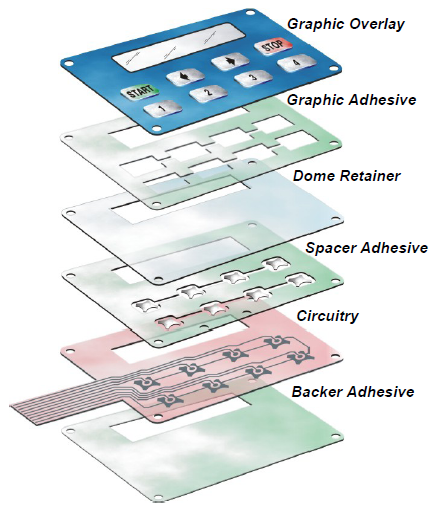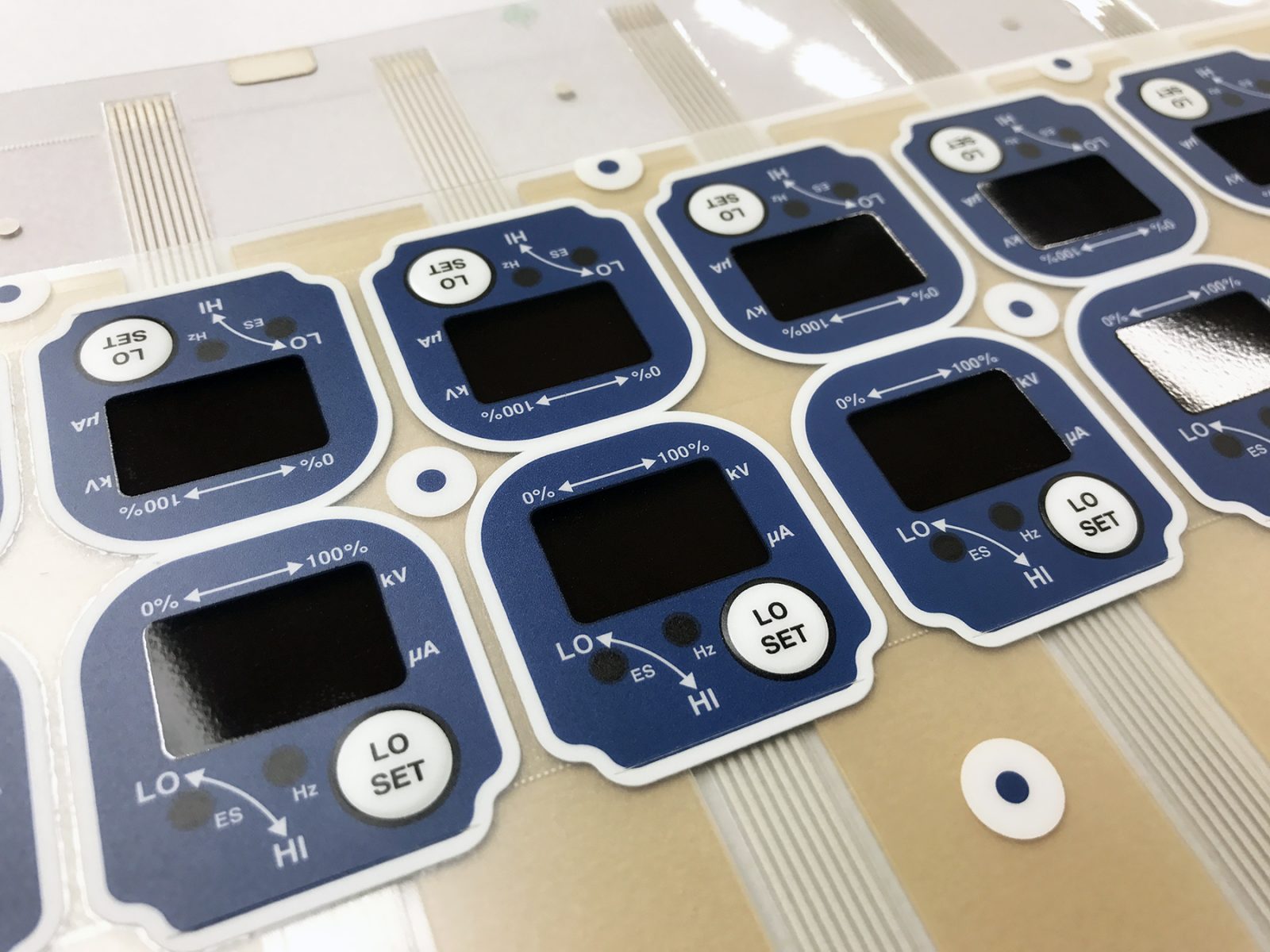Understanding the Relevance of Membrane Switches in Interface
Membrane buttons are indispensable components in the style of reliable customer interfaces, facilitating not only functionality however additionally improving aesthetic charm and customer communication. As we explore the various advantages and future patterns connected with Membrane modern technology, it comes to be clear that these buttons are more than just components; they stand for a convergence of innovation and practicality.
What Are Membrane Switches?

The spacer layer, which has sticky residential properties, enables for the separation of the circuit layer from the overlay, ensuring that the button continues to be in a non-activated state until pushed. When pressure is related to the overlay, it presses the spacer layer, connecting the gap and finishing the circuit in the underlying layer. This layout not only reduces the physical room needed for conventional mechanical switches yet additionally improves the resilience of the tool, as Membrane switches are usually resistant to dust, wetness, and other ecological aspects.
Typically located in applications ranging from consumer electronic devices to medical tools, Membrane buttons are integral to modern-day technology, giving a easy to use and efficient user interface that aligns with modern design demands.
Benefits of Membrane Buttons
While various button technologies exist, Membrane Switches offer unique benefits that make them particularly preferable in numerous applications. One of the key benefits of Membrane switches is their small design, which permits space-saving implementations in gadgets where realty is limited. Their thin account not just enhances visual allure but also promotes lightweight building.
An additional significant advantage is their resistance to ecological variables. Membrane buttons are commonly sealed against wetness, dirt, and contaminants, making them optimal for usage in demanding environments, such as medical gadgets and commercial tools. This longevity extends the life expectancy of the switch, minimizing upkeep prices and enhancing reliability.
Furthermore, Membrane switches can be personalized to meet particular style demands, integrating one-of-a-kind graphics and shades that boost customer communication. Their responsive responses alternatives can also be tailored to offer a gratifying individual experience. Furthermore, Membrane switches are affordable, particularly in high-volume applications, as they can be produced efficiently.
Applications in Various Industries

In the consumer electronics field, Membrane switches are widespread in gadgets such as microwaves, cleaning makers, and remote controls. Their responsive comments and visual choices enhance individual experience while providing a streamlined, contemporary appearance. Furthermore, auto makers utilize Membrane buttons in dashboard controls and infomercial systems, where space is restricted, and user engagement is essential.
Furthermore, the commercial industry leverages Membrane buttons in control panels for machinery and tools, permitting instinctive operation in typically rough atmospheres. Their resistance to chemicals and moisture guarantees long life and reliability in these applications. Generally, the adaptability of Membrane Switches adds significantly to their extensive usage, making them essential in different technical domain names.
Design Considerations for Membrane Buttons

When designing Membrane switches, a number of crucial factors to consider have to be taken into consideration to guarantee optimal functionality and individual experience. The selection of products is essential; picking sturdy, high-quality substratums can boost the button's long life and resistance to ecological aspects such as dampness and temperature level variations.
Second of all, the style of the graphic overlay should prioritize quality and convenience of use. Icons and text have to be understandable, and the design should facilitate intuitive communication (membrane switches). In addition, tactile feedback is important; incorporating a responsive dome or various other systems can enhance the individual experience by supplying physical confirmation of activation
An additional crucial aspect is the switch's electric performance. Developers need to guarantee that the conductive traces are properly made to lessen resistance and avoid signal disturbance. This includes assessing the called for actuation click resources force and ensuring compatibility with the digital components they will certainly interface with.

Future Fads in Membrane Innovation
As technology continues to advance, Membrane buttons are poised to progress significantly, driven by advancements in products and producing strategies. One emerging pattern is the unification of advanced materials, such as versatile substratums and conductive inks, which enhance toughness and reduce the read here general weight of Membrane buttons. These materials not only enhance the responsive feedback but likewise enable for the layout of switches that can withstand harsher environmental problems.
Additionally, the assimilation of touch-sensitive technologies is transforming standard Membrane Switches right into even more interactive user interfaces. Capacitive touch sensors embedded within Membrane switch panels can give a more instinctive and receptive customer experience, straightening with the growing demand for sleek, modern designs in consumer electronics.
Additionally, developments in printing techniques, such as digital and 3D printing, enable rapid prototyping and personalization of Membrane switches. This flexibility allows manufacturers to respond quicker to market demands and consumer choices.
Last but not least, sustainability is coming to be a significant emphasis, with manufacturers exploring eco-friendly materials and procedures. As these fads unfold, the future of Membrane technology assures boosted capability, aesthetic appeal, and environmental duty, solidifying their role in innovative customer interfaces across various industries.
Verdict
To conclude, Membrane Switches stand for an important component in the layout of interface, integrating functionality with visual adaptability. Their benefits, including resilience and resistance to ecological aspects, make them suitable for varied applications across various sectors. Additionally, thoughtful design factors to consider improve customer interaction and experience. As improvements in technology proceed, the evolution of Membrane switches is expected to further fine-tune user interfaces, driving advancement and improving functionality in an increasingly intricate technological landscape.
Membrane buttons are essential elements in the layout of effective user interfaces, assisting in not just capability however also improving aesthetic appeal and customer interaction.Membrane Switches serve as an essential component read the full info here in various individual interfaces, facilitating a smooth communication in between users and electronic devices.While various button innovations exist, Membrane Switches deal distinctive benefits that make them specifically preferable in various applications.Moreover, Membrane switches can be personalized to satisfy certain style demands, integrating special graphics and shades that boost individual communication.In final thought, Membrane Switches represent a vital component in the design of customer interfaces, combining capability with visual adaptability.
Comments on “How Membrane Switches Are Used in Medical Devices and Equipment”